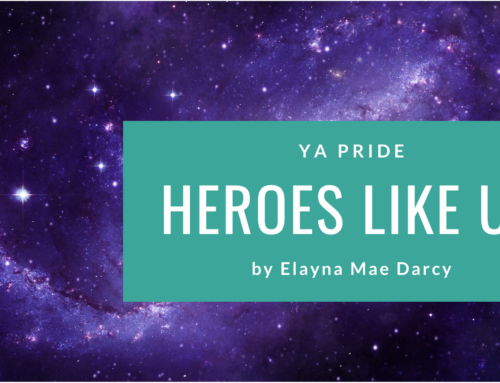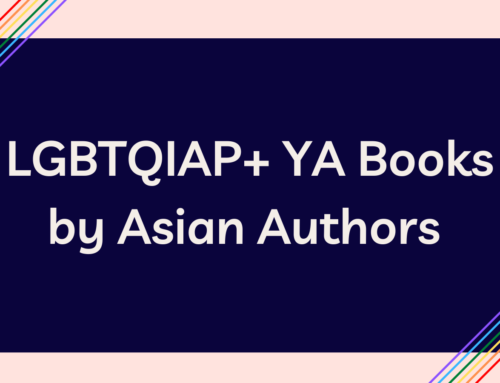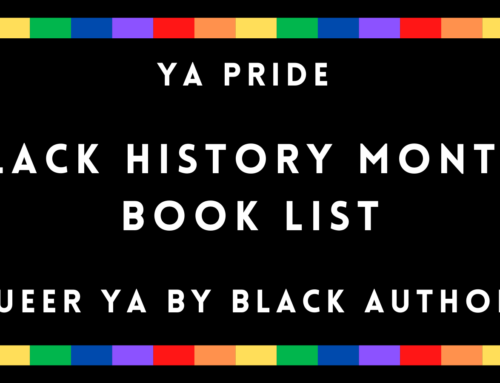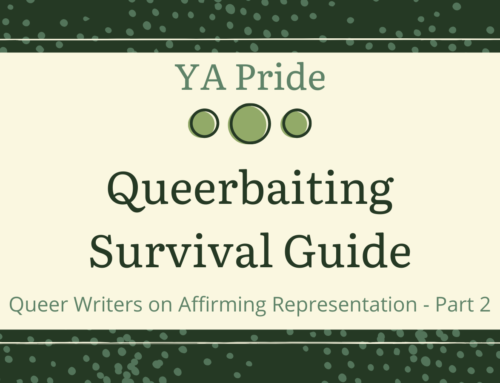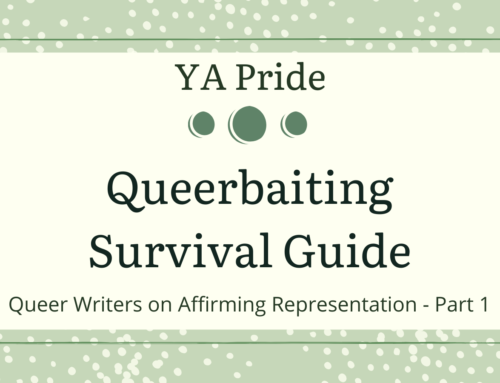We’re so psyched to have the chance to talk with Corinne Duyvis, author of the fantastic queer YA fantasy Otherbound, about world-building, the work she’s done with DisabilityinKidLit, her queer SF/F wishlist, and much much more. 🙂
Amara is never alone. Not when she’s protecting the cursed princess she unwillingly serves. Not when they’re fleeing across dunes and islands and seas to stay alive. Not when she’s punished, ordered around, or neglected.
She can’t be alone, because a boy from another world experiences all that alongside her, looking through her eyes.
Nolan longs for a life uninterrupted. Every time he blinks, he’s yanked from his Arizona town into Amara’s mind, a world away, which makes even simple things like hobbies and homework impossible. He’s spent years as a powerless observer of Amara’s life. Amara has no idea . . . until he learns to control her, and they communicate for the first time. Amara is terrified. Then, she’s furious.
All Amara and Nolan want is to be free of each other. But Nolan’s breakthrough has dangerous consequences. Now, they’ll have to work together to survive–and discover the truth about their connection.
You can visit Corinne online, or follow her on Twitter and Tumblr!
Vee: Hey Corinne! Thanks so much for joining us here on GayYA. To start off, can you tell us a little bit about who you are, and how you identify?
Corinne: So happy to be here! GayYA is a much-needed presence in the YA world.
I write YA and MG novels (though only the YAs are published so far), all in the sci-fi/fantasy genre. When you grow up on Goosebumps, Animorphs, and Harry Potter, it’s only natural! I’m Dutch—born and raised in Amsterdam—and I’m into comic books, krav maga, cats, and making lists for everything under the sun. I still live in Amsterdam now, with a chubby, not-too-bright cat as my roommate.
I’m bisexual and autistic, so it’s probably not a huge surprise that diversity is my jam. This manifests itself in various ways: I write diverse protagonists/worlds, co-edit Disability in Kidlit, and I’m a team member with We Need Diverse Books.
V: Your debut novel Otherbound was released last year which features (among many other things!) two queer girls. How did Otherbound first come into being?
C: My typical answer is: a mishmash of things. I had this one idea about something happening whenever someone closed their eyes, and this other idea about traveling between worlds, and something about invulnerability, and they kind of merged spontaneously at one point. Everything clicked into place pretty quickly.
The queer element of Otherbound wasn’t there at the beginning. There wasn’t any romance at all, in fact. I was plotting out the book and considering the interactions between Amara (main character) and Cilla (another prominent female character) and kind of fannishly went, “Haha, I so ship it.”
And then I realized I was writing my own book, which meant I could, in fact, ship them, and it would be super hella canon. I am in control.
That realization was oddly liberating. It’s astonishing how often we self-censor without even realizing it, whether because of concerns about The Market or because we’ve simply internalized how much diversity is “allowed” in a story. I figured that I already had two protagonists of color, two worlds almost entirely populated by people of color, multiple disabled characters—including both protagonists—et cetera. Surely it would be too much if I added queerness into the mix, too?
But why should it be? Why would two girls in a relationship be an added distraction, while a girl and a guy in a relationship would be normal and expected?
I still waffled on whether I wanted to go for it or not, partially because I wasn’t sure I could make it work with the complex power dynamics going on between the two of them. I decided to give it a try. Obviously, it stuck!
V: I was fascinated by all the levels of oppression and privilege you layered into Otherbound, particularly the nuanced depiction of its effects and how some of the power dynamics were opposite of our society. What was the process like for developing that?
C: I’d never had to build a secondary world before, and it was kind of petrifying. I was convinced I’d be awful at it. Then, when I actually started hashing out ideas, I found that I really enjoyed it. It was much more organic than I’d expected. I love playing with world rules, with what-ifs, and I’ve often been bothered by how, in some secondary worlds, the social norms are identical to ours for no clear reason. Sometimes these norms have a purpose in the story, and the author explores it in a meaningful way; other times, it feels as though people default to those norms, rather than it being a conscious choice they’re making.
But it doesn’t have to be that way. We have limitless freedom when it comes to secondary worlds. I loved putting that to work.
A lot of it is pure extrapolation. Examples:
A large part of the story is Amara protecting a rogue princess; therefore, I needed a monarchy that was recently overthrown. I dubbed their people Alineans.
I knew I wanted a very mixed world; therefore, I decided to have a recently (200 year-ish) settled part of land that functioned as sort of a trading outpost, drawing people from all over the world.
So, wait, how do I combine monarchy and distant trading outpost? Are the Alineans considering this a colony? Perhaps, but I need a local government for this plot to work. Let’s say this monarch appointed a branch of the royal family to rule this part of the world.
But then, wait, if the world is so mixed, odds are the people overthrowing the monarchy wouldn’t (all) be Alineans. Would the local Alinean population rise up and try to reclaim their rule? If they founded this outpost and have been the favored class for so long, I imagine they wouldn’t simply sit back. Maybe they’re outnumbered by now, since the trading outpost is located nearer to other countries than the Alinean homeland. What kind of dynamics would that create between these different groups, given this history? How would they perceive each other? How does this animosity play out in locations that have different racial make-up—for example, select cities or islands where Alineans are still in the majority—and how would it interact with class? Are Alineans still economically privileged more than a decade after the coup?
I didn’t want to simply mimic existing power structures and racial dynamics, basically. I tried to build it from the ground up, but implementing what I’ve learned about how these imbalances work in our world.
I applied the same logic to my local servant population. I came up with my own servant system, created a local lore around it, and considered how these different factors would affect the world, people, and dynamics. How might individual servants perceive themselves? What logic is being used to justify servitude? Do people genuinely believe this logic or do they realize that it’s bunk but play along anyway? How does the average citizen perceive servants? And how might this Alinean system of servants be perceived by other population groups, and how has the system been applied—and perhaps altered—in the years since the coup? And how would all this differ for servants like Amara, who grew up on the run, separated from the tightly knit servant culture that’s inevitably evolved?
And on and on. Every world-building choice has consequences in terms of the characters’ social standing. It has consequences for both the groups as a whole and for the individuals in their unique positions. It was a challenge keeping all of that straight, but the more the world came together, the more real it felt. Three-dimensional, breathing. Conveying this in the text was difficult, and I don’t know how well I succeeded, but the building, the way it took shape in my head … I loved it.
Even if the power structures are different and privilege and oppression play out in different ways, people will respond to them in very human ways: resentment, fear, internalized self-hate, dedication, pride, fury, resourcefulness. Some try to fight and others try to grind their teeth and bear it and others try to play the system and others accept their lot. However different a secondary world may be from ours, I do strongly believe you need a thorough understanding of how oppression works in our world on both a micro and macro level in order to extrapolate its effects to other worlds and situations.
V: The world of Otherbound is very complex, and I’m not just talking about the Dunelands. There was plenty of magic and complicated oddities going on. Is there anything in this rich world that you know about, but weren’t able to show in your book?
C: I should have considered this question more carefully before answering the previous one! Yes, there’s an awful lot going on behind the scenes. This was one of the most difficult parts of writing and editing the book: making sure I gave enough information to make the world understandable, to make the plot work, and perhaps to intrigue the reader—but never so much that it overwhelmed or confused them. So I held back a lot of information.
One element I enjoyed hashing out, but didn’t get to show as much of in the book, was the mage system. All five recurring population groups in the book perceive mages differently and have different lore surrounding them; there are also certain cultural associations with magic use. While there are of course many individual differences, some cultures embrace it, others fear it, and others reject it outright. This has consequences for how their mages are treated and what kind of code and rules mages are expected to abide by.
Bits and pieces show up in the book, but not nearly as much as I’d brainstormed behind the scenes.
V: What do you think your teen self’s reaction would be to reading Otherbound?
C: That is an interesting question! I’m not quite sure. I think I might’ve been intrigued by the character’s situations, but turned off by the expansive world, since a lot of the books teen!Corinne read at the time were much more straightforward world-wise. As much as I’d love to say that I would’ve loved and cherished Otherbound forevah and evah, I veered toward more commercial books.
I do think, though, that it would’ve been a real eye-opener to see two girls attracted to each other, particularly in a book that wasn’t about queerness at all. I don’t remember ever reading queer characters in books growing up (just graphic novels), which is kind of crushingly sad.
V: You co-run the fabulous blog Disability in Kidlit (which if anyone in our community doesn’t know about, definitely should). I’m curious, do you think running that blog has affected your own writing in any way?
C: Oh yes! Absolutely. For one, it made me realize just how many disabilities out there are never or rarely portrayed, and it made me want to write Every Single One of them. (Good luck with that, Corinne.) Interacting with contributors behind the scenes, hearing people’s reactions to our content, and of course reading the actual posts, makes the lack of (good) disability representation painfully clear. There’s so, so much to explore, and so, so many people are hungry for it.
Basically, I suspect I’d have a lot fewer disabled characters in my WIPs if I’d never started the site.
For another, it made me realize just how much I don’t know yet. I thought I was super savvy about disability stuff two years ago (Disability in Kidlit went live July 2013), but I’ve learned a lot since then, and it’s only made me realize how much there’s still left to learn. The website has made me much more conscious of how I depict disability; for example, while I’m generally happy with how I wrote the disabilities in Otherbound, there are things I’d do different were I writing the book now.
V: I recently learned that you are an artist as well as a writer! (And your art is just gorgeous.) Is there any way in which those things have had an impact each other?
C: Oh, thank you! That’s lovely to hear.
One obvious way is that it’s made me a very visual writer. I always have a very clear picture in my head of what my characters look like. I try not to let this seep into my books via endless physical descriptions, and art is a great outlet for that. I always doodle my characters to get a feel for them. It’s fun for me, and others may enjoy seeing my depictions of the characters.
V: In the recently released article LGBTQ Publishing Wishlist you give a great answer about what you’d like to see in queer YA. I wanted to ask: what are the top three queer stories/characters that you personally would like to see in SF/F?
C: Hmmm.
A big one—which I also mentioned in the article—is that I really and truly want to see more trans protagonists in SF/F. (Particularly written by trans authors!) It’s astonishing that this … basically doesn’t exist.
(I’m working on it, unsurprisingly. We’ll see when or if that gets sold.)
This is another one I mentioned in the article, but I super want to see more queer communities portrayed in fiction. I mean, come on, we flock together, whether on purpose or subconsciously. The lone queer kid is an incredibly important narrative to feature, and something many of us can relate to, but it’s surprising to me how this seems to be the dominant narrative. Where are the gay protags with the gay best friends? Where’s the GSA kids at? Where are the after-school meetups with queer friends the protagonist met online?
I want to see this in contemporary fiction, but even more in SF/F, because it’s my genre of choice. It may be that people feel that this would be “too much.” It’s becoming more and more OK for a character to be incidentally queer in an SF/F story, thankfully, but the presence of an entire group of queer characters would mean the characters probably talk about their queerness, joke about their queerness, commiserate about experiences, talk about intra-community issues … all topics that come up to a greater or lesser degree in real-life meetings between queer people. And this would feel like an distraction in a plot-driven SF/F story, or like preaching, or like shoehorning in irrelevant queer content. It’s as though a certain percentage of queerness will automatically turn a book into a Queer Story, and those clearly have no place in SF/F.
(Screw that. Give me a GSA club caught in the zombie apocalypse.)
Well, that’s my theory for why we so rarely see it, anyway.
Finally, I want to see more queerness in traditionally very straight, cis narratives. For example, queer characters in the compulsorily cishet world of many dystopians. (Some books, like Phoebe North’s Starglass and Gennifer Albin’s Crewel, do address this. I’d love to see it as the focus though, with main characters rather than secondary characters.)
Or maybe two lovers destined to be together across time and across incarnations … but now maybe they’re both girls. Or one of them is non-binary and they’re really not keen on the gendered language in the prophecy. Or one of them is ace, and dang, that’s gonna get in the way of True Love’s Kiss.
There is so much potential out there, and I can’t wait to see what the next few years have in store for us.
V: What’s next for you?
C: My next book is out spring 2016, and while its protagonist is straight, there are major queer/trans side characters. It’s called On the Edge of Gone; it’s a near-future sci-fi YA set in Amsterdam during an apocalyptic comet impact. The protagonist is a mixed Surinamese-Dutch autistic girl who believes she’s doomed until—only minutes before impact—she finds herself on a damaged generation ship, the last one remaining on Earth. All other ships have already fled the planet.
Engineers are working on repairs around the clock so the ship can escape the incoming impact winter and the comet’s disastrous after-effects, but she may not be allowed to stay for launch. She’ll have to prove her value on board … a task that’s made extra complicated by her mother’s irresponsibility, her sister’s disappearance, and the world around and inside her rapidly falling apart.
It’s a very personal story, and one I’m excited to share.
I’m also working on several MGs—an alternate-world sci-fi, a current-day sci-fi, and a quirky horror—and playing around with ideas for various YAs. (Incidentally, all those YAs feature queer girl leads, because of course.) None of these are under contract yet, so we’ll see which one ends up being book #3. Place your bets!

